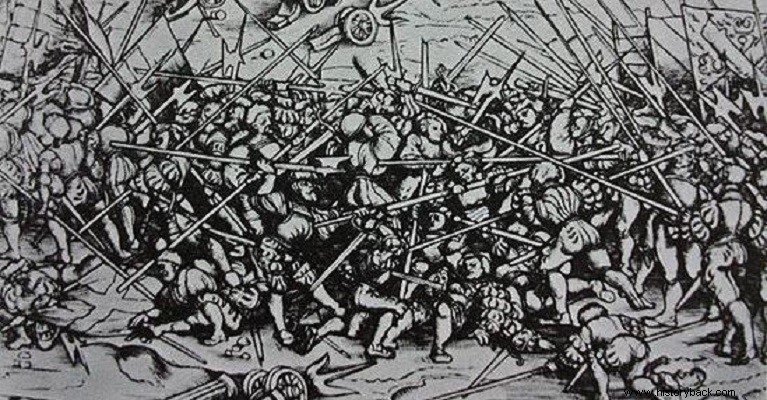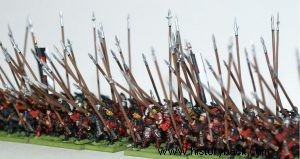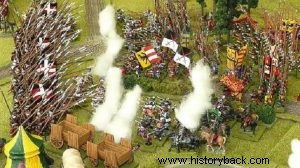
The Black Legion was a mercenary formation of German Landsknechts created in 1514 by Duke Georg of Saxony to fight against his rival Count of Frisia. The original name of the mercenary formation was Black Guard.
Under this name, it took part in the campaign in East Frisia in 1514, leaving behind ashes, corpses and debris. When the Saxon-Frisian war ended in 1515, the French king hired the Germans into his service. The "Black Guards" were reinforced with 12,000 more German Landsknechts forming the Black Legion, a body that, not unjustifiably, was characterized as a "body of traitors".
The German emperor appealed to the mercenaries to leave the French service and return to "mother" Germany. But most ignored him and preferred French gold. And not only that. In 1515 the Legion numbered 17,000 men (12,000 sarissa-bearers, 2,000 arquebusiers, 2,000 armed with longswords and 1,000 lance- and sickle-bearers). The legion was organized into "companies" of 500 men. It was headed by the German Georg Langenmandel .
The Legion was immediately sent to Italy where King Francis of France was fighting (Italian Wars). He took part in the battle of Marignano and fought well against the hitherto undefeated Swiss. Between Landsknecht and the Swiss there was unbridled hatred, and those who were captured by the others had, at best, to expect a quick death by beheading. At worst, a horrible death by torture awaited them.
However, the Legion was to take part in the decisive battle of Pavia in 1525. At the call of the new German emperor Charles V, many men had left the service of the French king. Approximately 5,000 Germans, however, remained under the French flags and they fought in the said battle against their countrymen commanded by the French nobles Francois de Lorraine and Richard de la Pole.
The end of the Legion
In 1525 the French King Francis besieged the Italian city of Pavia at the head of 23,000 men. An equal Imperial army of Germans, Spanish and Italians moved against him on 24 February. The Imperials moved at night and surprised the French. The Black Legion moved first to intercept the attackers.
But luck did not smile on the stateless mercenaries. Fighting with their compatriots Landsknecht under Georg von Frudzberg they were crushed. Before the battle the de facto leader of the Legion Langenmandel challenged Frunzberg to a duel but instead of another answer he was killed by the opposing soldiers.
The Imperial Germans fell furiously upon their treacherous countrymen and cut them down to one, with the French at their head. Those who had the misfortune to be captured met a martyr's death afterwards. Their treachery could not be forgiven. The French king was also captured in the battle.
However, the Legion was reconstituted as a typical Landsknecht regiment, 4,000 strong and fought again against the Germans in southern Italy, only to be destroyed again, in 1528. This time the men who survived it joined the German Imperial forces.

The Black Legion. Representation with miniatures.

The Battle of Pavia. On the left the Black Legion tries to intercept the German Landsknechts.
